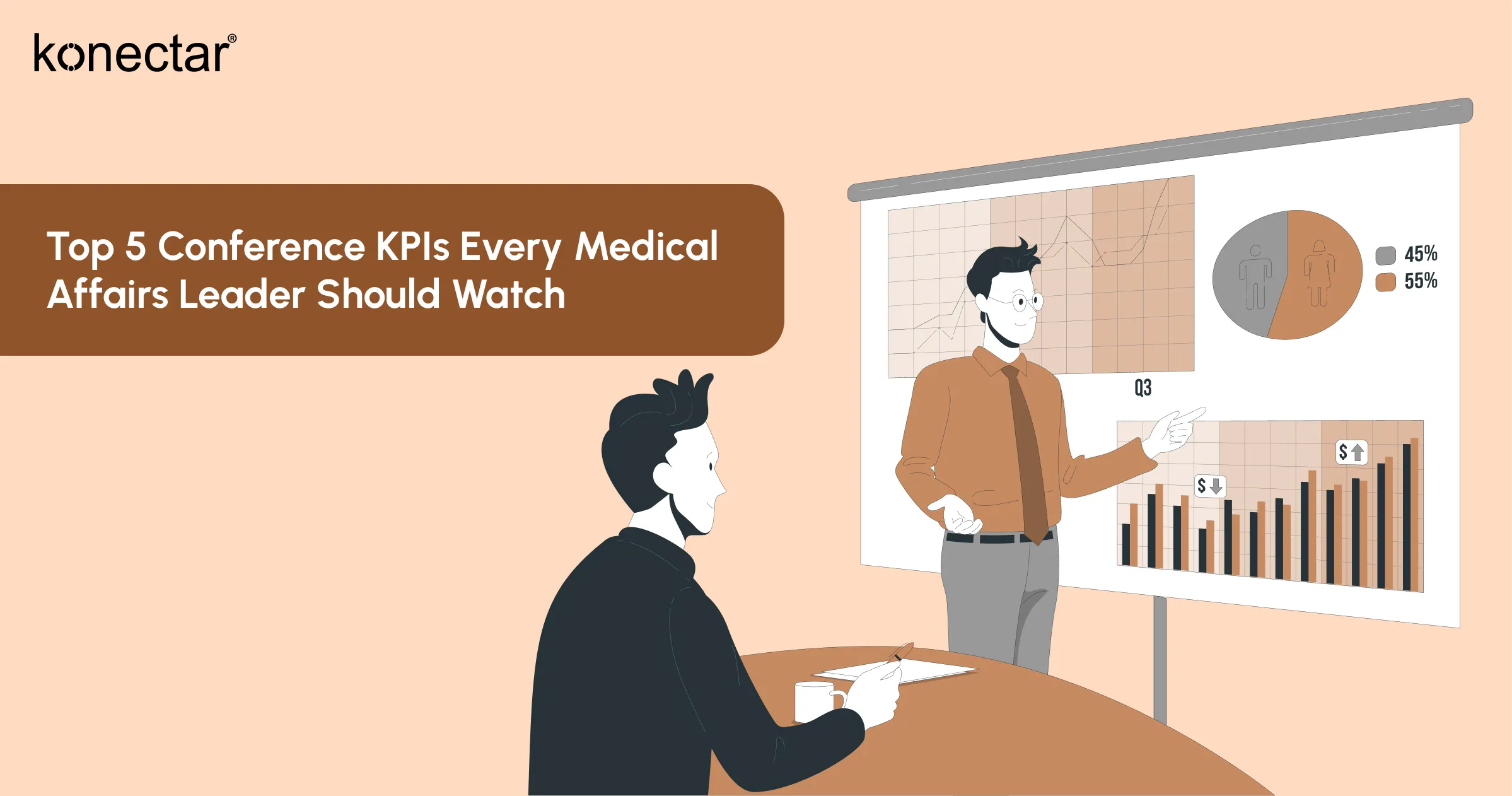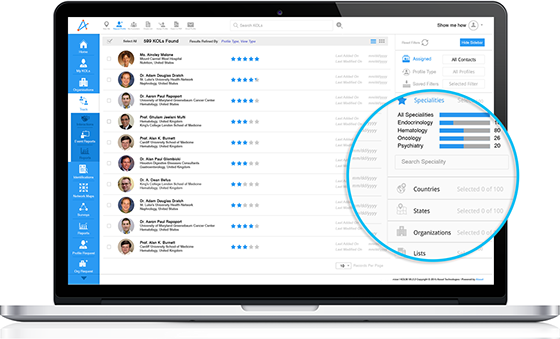04-11-2025
Top 5 Conference KPIs Every Medical Affairs Leader Should Watch

Medical conferences are excellent opportunities to exchange scientific findings, strengthen relationships, and shape future collaborations. Yet, amid the presentations, meetings, and networking, it can be challenging to quantify what success looks like.
This is where tracking the right conference KPIs (Key Performance Indicators) comes in handy. By focusing on measurable outcomes, leaders in medical affairs can ensure that every interaction and initiative contributes to achieving strategic goals.
Five Key Areas to Monitor for Conference Success
A successful medical affairs strategy includes monitoring these key conference KPIs:
Competitive Booth Insights
Observing your competition is an integral part of doing your homework. How your booth compares with your competitors in terms of activity, messaging, and audience engagement is an important fact to consider. This benchmarking can reveal what resonates with your audience and areas where your positioning can be differentiated from your competitors.
Observe foot traffic, session attendance, and engagement tactics at competitor booths and summarize insights post-event. These insights are valuable for medical affairs managers seeking to refine their booth strategy and communication to achieve stronger engagement outcomes.Cross-functional Collaboration
This evaluates how well medical affairs teams collaborate with other internal functions — such as commercial, marketing, and clinical affairs— before, during, and after the conference. It assesses whether everyone representing the organization at the conference is aligned on key messages, scientific narrative, and engagement priorities.
Tracking this metric includes assessing qualitative aspects such as pre-conference message consistency checks, joint planning efforts, and real-time sharing of leads.Relevant Inquiries Received
The number and the nature of scientific or medical inquiries your team receives during or after the conference can be a good indicator of success. Analyzing this data can reveal potential data gaps and emerging educational needs within your audience.
This data can further reveal trends, if the inquiries are logged by theme, topic, or product, teams can analyze the pattern that’s taking shape and make proactive decisions.Post-Conference Follow-up Effectiveness
This KPI tracks how well your team converts booth interactions into sustained, post-conference engagement. It measures the team’s ability to maintain relationships, continue scientific discussions, and move initial conversations towards tangible outcomes.
A high follow-up effectiveness rate indicates that your team not only made connections at the conference but also successfully maintained momentum after the event ended.Conversion Rate
Assessing how many high-value interactions, especially with institutional stakeholders, progressed beyond follow-up conversations to formal collaborations, partnerships, or client relationships is crucial.
A strong conversion rate demonstrates that your conference presence is translating into measurable outcomes.
Final Words
At the end of the day, KPIs are never one-size-fits-all. What matters most is your organizational goals, focus, and conference objectives.
These KPIs serve as a solid foundation; build upon them by tailoring your approach to suit your unique goals and engagement priorities. The key is to track what truly reflects your medical affairs impact.





